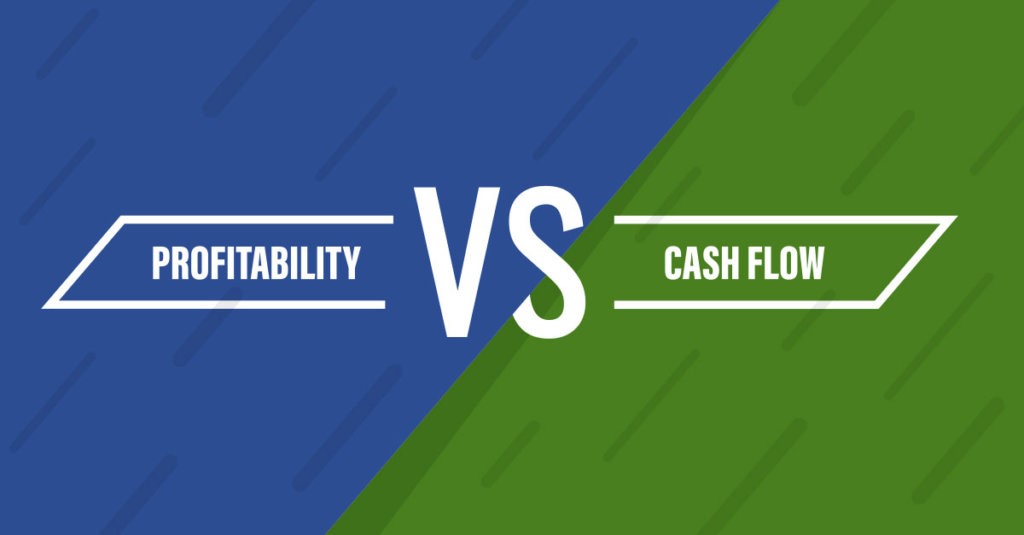
Defining Profitability and Cash Flow
Profitability measures how much money a business earns after expenses are deducted from revenues. This metric typically appears on financial statements as net income or profit. A profitable business can create value for its owners and reinvest in growth opportunities. However, profitability does not necessarily indicate immediate financial health.
On the other hand, cash flow tracks the actual cash that enters and exits a business. This measurement is crucial for daily operations, covering expenses like salaries, rent, and supplier payments. A company can be profitable on paper but may still face cash flow issues. This situation occurs when sales are made on credit or when expenses exceed available cash.
The Importance of Understanding Profitability
Understanding profitability allows businesses to assess their overall performance. Profitability ratios, such as gross margin, operating margin, and net profit margin, provide valuable insights into a company’s efficiency. For example, a high gross margin suggests that a business can produce goods or services at a lower cost than it sells them for, which is a positive indicator of financial health.
Moreover, profitability serves as a foundation for attracting investment. Investors and stakeholders often evaluate a company’s profitability when deciding to invest or partner with a business. A strong profit record can enhance credibility and support growth initiatives. Thus, understanding and improving profitability should be a priority for business leaders.
The Role of Cash Flow in Business Operations
Cash flow plays a vital role in ensuring that a business can meet its short-term obligations. Without sufficient cash flow, a company may struggle to pay suppliers, employees, and other operational costs. This situation can lead to serious consequences, including damaged relationships with suppliers and potential bankruptcy.
Furthermore, cash flow management is crucial for strategic planning. By analyzing cash flow patterns, leaders can make informed decisions about investments, expansion, and cost-cutting measures. For instance, understanding when cash inflows peak can help businesses time their expenditures effectively. Therefore, maintaining a positive cash flow is essential for operational stability and long-term success.
Profitability vs. Cash Flow: The Key Differences
While profitability and cash flow are interconnected, they are fundamentally different. Profitability reflects how well a business can generate income, while cash flow measures the liquidity available for operations. A profitable business can still experience cash flow issues if it does not manage its accounts receivable and payable effectively.
For example, a company might have high sales but may not receive payment until weeks or months later. This delay can create cash flow constraints, making it difficult to cover immediate expenses. Conversely, a business might have strong cash flow from sales but struggle with profitability due to high operating costs or low margins. This distinction emphasizes the need for a balanced approach to financial management.
Common Misconceptions about Profitability and Cash Flow
Many business owners mistakenly believe that profitability guarantees financial stability. This misconception can lead to poor financial decisions. For instance, a company that focuses solely on increasing sales may overlook cash flow management. This oversight can result in operational difficulties and missed opportunities.
Another common misconception is that cash flow alone determines a business’s health. While cash flow is critical for day-to-day operations, it does not provide a complete picture of financial performance. A company may have strong cash flow but poor profitability, indicating inefficiencies or unsustainable practices. Therefore, leaders must assess both profitability and cash flow to ensure long-term success.
Strategies for Improving Profitability and Cash Flow
Improving both profitability and cash flow requires targeted strategies. For profitability, businesses can focus on enhancing operational efficiency. This can involve analyzing processes, reducing waste, and optimizing pricing strategies. By improving margins, companies can increase profitability without necessarily increasing sales volume.
To enhance cash flow, businesses should closely monitor accounts receivable and payable. Implementing clear payment terms and following up on overdue invoices can accelerate cash inflows. Additionally, companies can negotiate favorable payment terms with suppliers to extend cash outflows. By managing these aspects effectively, businesses can improve their cash flow situation.
The Interplay Between Profitability and Cash Flow
Profitability vs. cash flow is not merely an academic distinction; the two concepts interact significantly in practice. A business with high profitability but poor cash flow must address its liquidity challenges. Conversely, a company with strong cash flow may not be sustainable if it consistently operates at a loss.
Furthermore, decisions that impact one area can influence the other. For example, investing in new equipment may improve profitability by increasing production efficiency. However, if that investment significantly reduces cash reserves, it could create cash flow issues in the short term. Therefore, leaders must consider both profitability and cash flow when making strategic decisions.
Real-World Examples
Numerous companies have faced challenges stemming from a lack of understanding regarding profitability vs. cash flow. For instance, many tech startups prioritize rapid growth and high sales. However, they may struggle with cash flow due to lengthy sales cycles and delayed payments from clients. These cash flow issues can threaten their survival, despite strong growth metrics.
Another example can be seen in the retail industry. A retailer might have a profitable holiday season but face cash flow problems when inventory is overstocked. The delay in converting inventory into cash can create liquidity challenges, leading to difficulty in managing operational expenses. Understanding the nuances of profitability and cash flow is critical for navigating such challenges.
Balancing Profitability and Cash Flow
In conclusion, understanding the relationship between profitability vs. cash flow is vital for any business leader. While profitability indicates how well a company generates income, cash flow reflects its operational health and ability to meet obligations. A balanced approach to both concepts ensures long-term sustainability and success.
Leaders must prioritize strategies that enhance both profitability and cash flow. By recognizing their interconnectedness, businesses can make informed decisions that drive growth and stability. In an increasingly complex financial landscape, understanding profitability and cash flow is not just beneficial; it is essential for thriving in today’s business environment.

